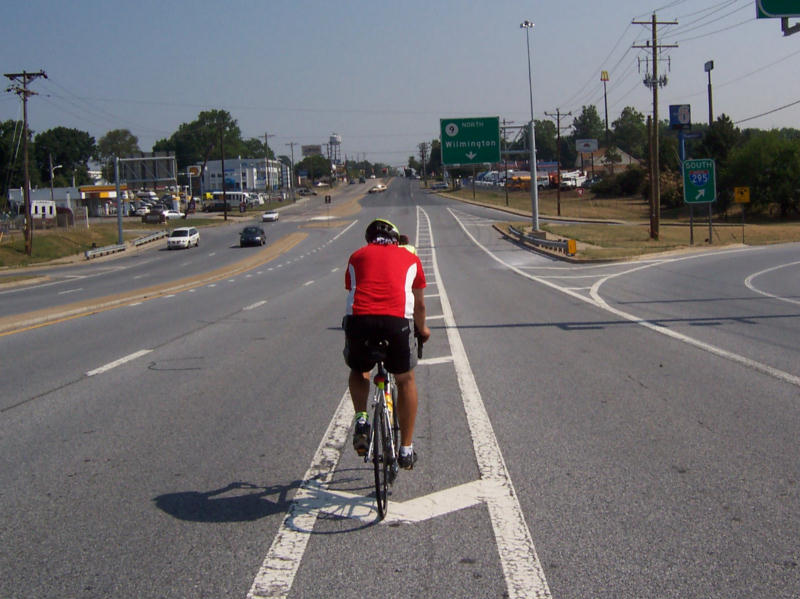
Though the USDOT’s Equity Action Plan (EAP) describes the new infrastructure law as “a historic investment in transportation equity,” the final verdict will depend on the administration’s next steps, how they distribute competitive grants, and other choices far outside of their control, such as how states and metro areas invest federal funds.
The EAP sets four main goals: wealth creation, power of community (amplify marginalized voices), interventions (increase funding applications for, and projects in, disadvantaged communities), and expanding access. These are important goals, but unless progress is made at the state and local level, these federal goals won’t lead to strong outcomes.
In addition, although the plan sets targeted goals, it doesn’t go far enough to sketch out the clear, simple, and measurable actions the USDOT will take to achieve them. The EAP emphasizes the importance of developing the resources, knowledge, and voice for underserved and marginalized communities to take full advantage of federal grant programs (whether by competing for contracts or being involved in the transportation decision-making process).
There are a few issues to consider.
First, lower-income jurisdictions have historically struggled to get applications for federal funding out the door, let alone conduct extensive transportation planning to make themselves more competitive. The process for applying for discretionary grants is arduous, and each application demands resources and time. In addition to managing the application process, communities have to manage compliance with statewide performance metrics and documentation processes for noncompetitive (formula) funds. Many also have to deal with state governments that are hostile to equitable distribution of these formula dollars.
To help mitigate this issue, the USDOT plans to pilot a new approach in June to make applying for multiple grant programs a less burdensome process. However, several funding opportunities have already come and gone. The USDOT’s Notice of Funding Opportunities (NOFO) calendar shows what funding opportunities are still to come and when they’re expected to be released.
Second, though the USDOT aims to elevate the voices of the underserved, which will be absolutely necessary to ensure equitable outcomes, political pressure will make this difficult at the local level. Transportation projects regularly fail to address the needs of underserved communities and can even harm these communities. Low-income communities and communities of color require significant investments to rectify past mistakes. To ensure investments appropriately target their concerns, they’ll need to be able to include their input in the decision-making process.
The EAP calls for an equity screening tool and more community engagement to help elevate marginalized voices, but they don’t describe how they’ll support local communities, metropolitan planning organizations (MPOs), state DOTs, or other entities in their efforts to put these tools into action. And as neighborhoods and jurisdictions of all kinds begin to make their case for more funding, local pressures are likely to steer these funds into the same communities that have always gotten funding, not the ones who need it most.
Third, for competitive grant funding programs, the USDOT expects communities to pay for a benefit-cost analysis (BCA). The only mention of BCAs in the EAP focuses on providing the specialized tools and resources to complete a full or “unflawed” BCA. However, even a perfectly completed BCA that meets all of the USDOT’s expectations will be inherently flawed, because these analyses quantify travel modes utilized, on average, by higher earners (like driving) as more valuable than less costly travel modes (like walking, biking, and public transit). So, in underserved communities, where people are less likely to own a car or would benefit from the savings of not having to use a car for daily trips, the scale could automatically be tipped in favor of investments that support car travel.
The USDOT plans to develop a new, accessible, replicable metric to measure transportation cost burdens per individual or household. This is a smart way to build a better understanding of access concerns in our transportation system, but if the flaw in BCAs isn’t addressed, funding will continue going to projects that reduce access now, even as the USDOT looks ahead to expanding access in the future.
The issues and recommendations outlined in the EAP only apply to discretionary grants, which make up just 13 percent of federal transportation funding. The other 87 percent consists of formula grants—funds distributed to states with very few strings attached. Lower-income jurisdictions have been historically marginalized in the planning process and tend to have less political power over how this money is distributed. Because of their flexible nature, the USDOT’s ability to shape how formula dollars are spent is extremely limited. The USDOT has some tools at their disposal, like releasing equity guidance to states, tracking state expenditures through an equity lens, or other such administrative tasks. But at the end of the day, the vast majority of the USDOT’s spending will only be as equitable as states decide it to be.
And this is why we’re nervous about the USDOT setting goals that they, unfortunately, aren’t fully capable of achieving themselves. Ultimately, states and local governments, who don’t all share the USDOT’s goals, will be responsible for delivering strong outcomes from the EAP.
While we applaud the spirit of the USDOT’s EAP and hope to see strong results, the USDOT must recognize that the current system is not set up to achieve equitable outcomes, and they have an uphill battle ahead of them. They’ll need specific, measurable goals to make tangible change, and they must be open to considering how every tool and system in their current arsenal further entrenches inequities. Finally, with funding from the infrastructure law already racing out the door, they’ll need to get moving so that underserved communities can get the most out of the remaining funds available.
For more on the USDOT’s EAP, and the EAPs of other federal agencies, see Smart Growth America’s memos developed by the Land Use and Development team.
The post To deliver on Equity Action Plan, USDOT, states, and local decision makers must take real action appeared first on Transportation For America.











